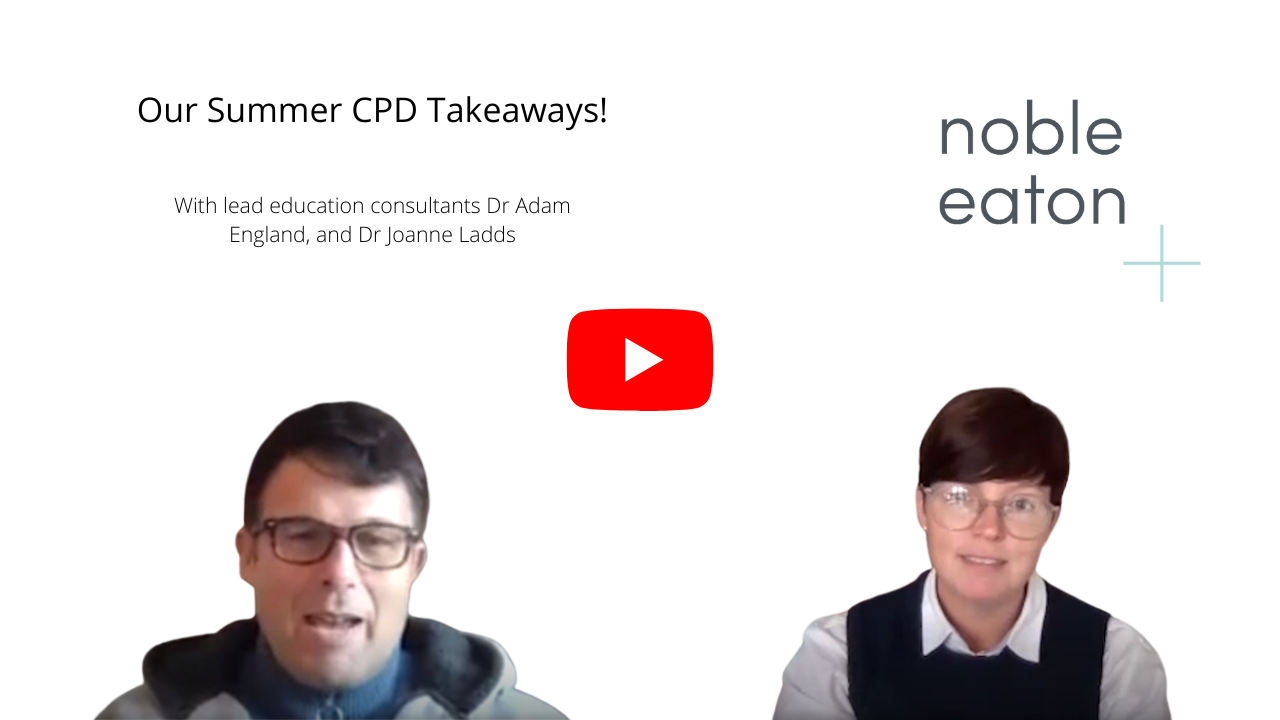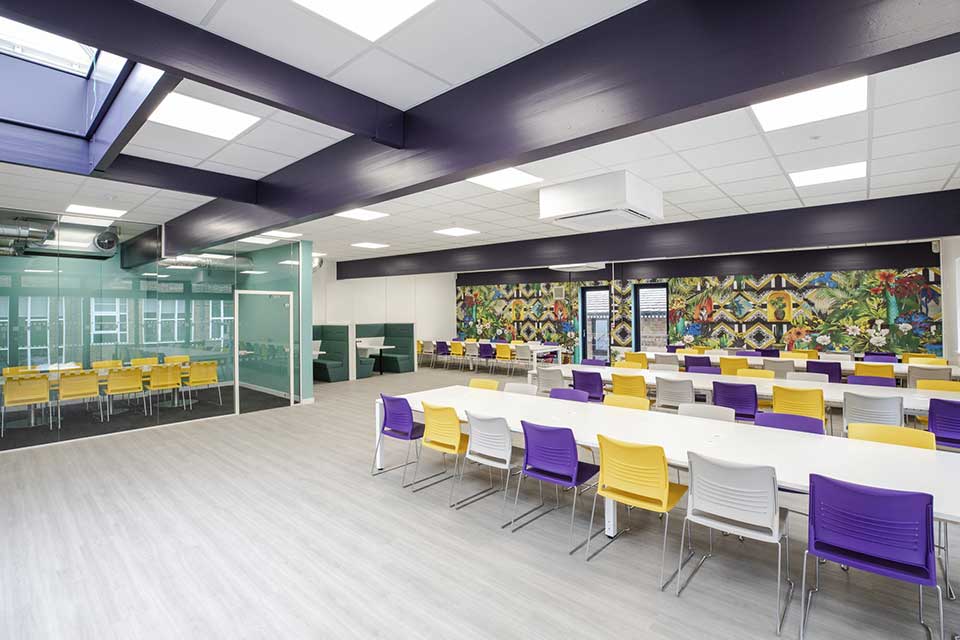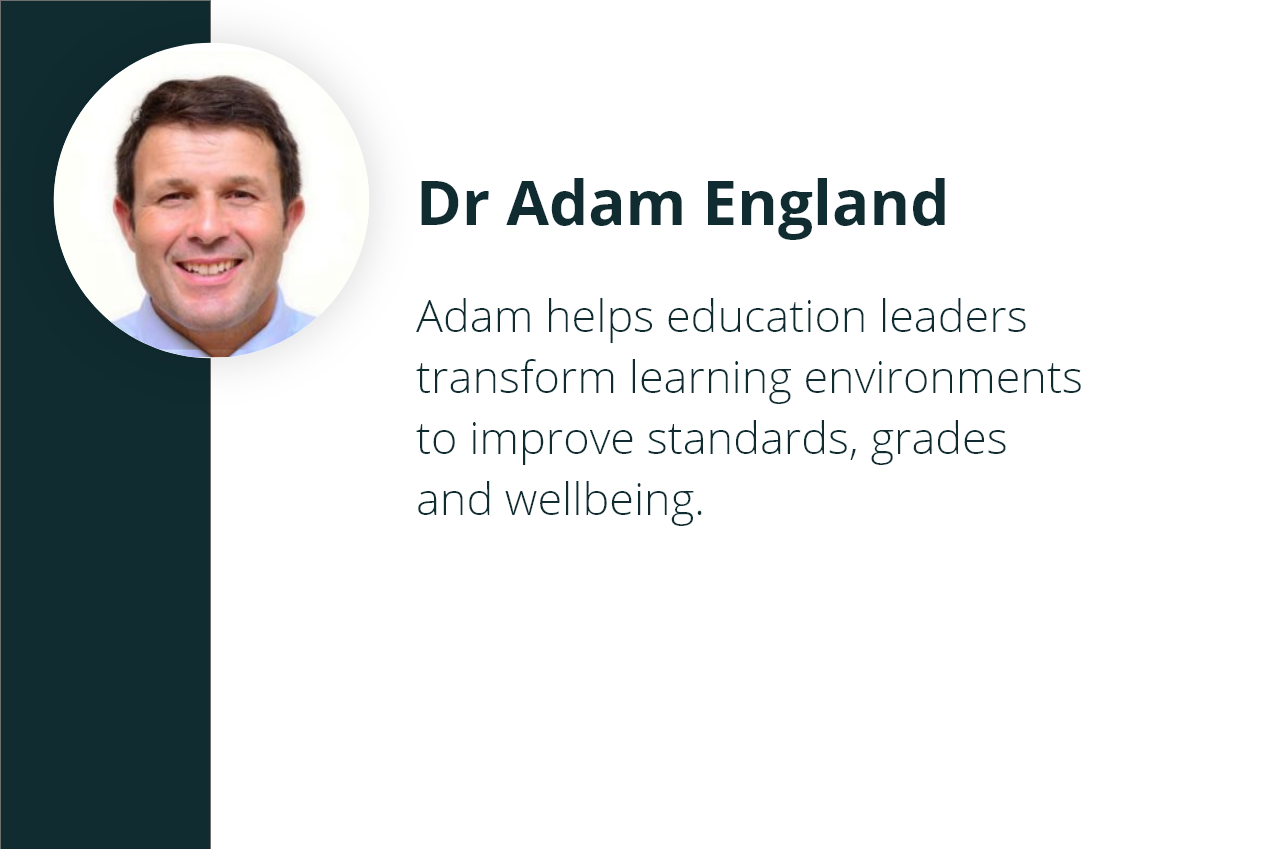Our Summer CPD Takeaways

I learned a lot on the day. What about you? What were your main takeaways?
My main takeaways were that there are open minded people who really want to push boundaries and try new things. When we get them together, that conversation really takes traction and really helps them to articulate what they would like to try and do and to get ideas about how they might be able to try and achieve that.
What are some of the main ideas you had, or your colleagues had to drive provision forward.
I found that they came with expectations about what they would gain from the day; it would be the odd idea, maybe a tweak to their pedagogy, a tweak to the setup of a classroom. By the time they left, they were completely inspired. They were not expecting to be as engaged with the process that we articulated, and we showed them how to get started on that journey in their own way. Everybody has their own unique school, their own unique settings, and their own unique challenges and I don’t think they realized that we understood that either. Talking about it also shows them that not everything is completely different. By sharing their experiences, they can find things that are quite similar, and they can talk through things and weigh different alternatives.
One brilliant thing was the people that came who were saying they’ve experienced learning environments that have been redesigned by Nobel and Eaton and Envoplan before and how amazing the sixth form center or library was. They did a lot of the talking for us to articulate what it was like at the beginning, the journey they went through and what it’s like now. They’ve come back for more. They were the key things for me, I think.
The depth diversity and dimensionality of what was discussed, I agree, was notable. The dialogue was worth recording by itself, and I think you’re right, people did come with preconceptions that perhaps we were just furniture people and by the time they finished, I think they understood that we were a lot more than furniture people. From the neuroscience all the way to the schools, we were the whole package.
My takeaway or one of the three I will talk about was how taken people were with our understanding of the subtleties of neuroscience, social science and the emotional intelligence required to try to build human centric environments. I think people began to appreciate that the creation of such environments is a lot more layered, a lot more dimensional, a lot more nuanced. Then to optimize their impact, you know, aligning with curriculum and with pedagogy, as we know, gets the standards. So, the one main takeaway was that people understood we made a huge amount of progress.
One of the many observations we could have made about the day too, was how engaged people were. It didn’t feel as if we were running a lecture. It felt like a conversation facilitation process for an eclectic group of people, but it all seemed connected by the same desire to understand more about how learning spaces work. I think that goes hand in hand with two things. We put a lot of effort into planning the day to ensure that the people attending will get the most out of it because coming out of a school for a day is a big deal, so we need it to be worthwhile. But on the flip side, it was the people that came who wanted to then engage.
The first activity, for example, was a reflection activity which you might think is a little bit bizarre. Attendees were thinking about their own perceptions of a learning environment where they felt safe, where they felt secure, where they felt ready to learn. One of the delegates said they hadn’t thought before that the space they were thinking they wanted to create for their sixth form was actually morphing their own preferences, so they should gather more information about the rest of the community and what they would like to see within that space.
My other observation with that session was how much it fired up my own imagination. By helping people understand that if you begin a school reformation process, data centricity is an excellent strategy because it shows that you’re addressing schools systematically in a very serious way. That’s what I took from that discussion with data centricity.
The other thought in terms of firing up my own imagination was this, and I think this is the joy of playing with physical artifacts which are physically there. I’m fascinated by the relationship between cerebrum and cerebellum. Cerebrum is a part of your brain which is mainly reasoning and understanding. Cerebellum is the part of your brain and the back of your brainstem that is responsible for all the automaticity, 3D touch, haptics, and other functions. It occurred to me that when you are sitting on the wobble stool you have really fired up your Cerebellum, which is the part required to do all the bouncing. Then we examine the relationship between the cerebrum on the fact that everyone gets calmer when they’re sitting on the stool; is this simply because you’re freeing up and clearing out the cerebrum and reusing and understanding bits of your brain by engaging with the environment physically? In that case, we should write a research project about it. However, I thought it was a great place to begin thinking about how environment improves behaviour.
We reduce our productivity by producing these standardized environments, schools and offices, because people can’t work as long or think as deeply as they could if those environments are more human-centric.
On the 15th of November we will be in Halifax for another CPD in the North. We will be converting a mill with amazing furniture and expertise. There will be some golden tickets to invite you to learn more about everything we’ve been discussing.
My final thought is that we are looking at the tip of a very big iceberg. We know some of the things we need to know and we know more than anyone else in the business. But in the grand scheme of things, we still don’t know enough so this is the beginning of a very extensive research project. We will, I expect, have a much more solid understanding of the optimal combinations of light, sound, and texture, the neuroscience behind it, and which parts of the curriculum are most viable and where. So, if you want to see us smash that research project out to the arena, get yourselves up to Halifax.

Don’t forget – we really want to hear about your experiences. It’s only by sharing and talking about these experiences and explorations that we will find the optimal combinations to support the broadest range of learners possible.
So please, join our Design Thinkers’ group, share your experiences, talk to us about the iterative facets of what it is you have done and above all else, please remember that by doing that, that is how we will incorporate Design Thinking as an embodiment of successful thinking in schools across the UK and beyond.



